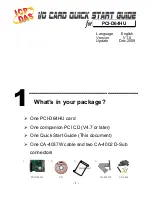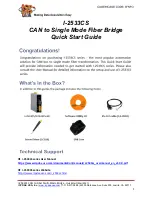
66251750-EN - V1.0 - 05/06/17
47
4000 Series Vandal Resistant Digital GSM Audio Intercom with Proximity
4000 Series Vandal Resistant Digital GSM - Technical Manual
PROGRAMMING AND STORING USER INFORMATION IN A NEW MEMORY LOCATION (MEM)
The memory location in the digital GSM is simply a position within the GSM’s internal memory where the user’s apartment information
is stored. Up to 500 user’s can be stored in the digital GSM (memory locations 000 - 499).
There are 9 parts of user information that is stored in a memory location (also refer to pages 36 - 38):
1. Apartment number
(APT)
;
2. Door/gate access code
(CODE)
;
3. Dial to open number/setting
(DTO/STO)
;
4. Timeband assignment
(TB)
;
5. Username
(NAME)
;
6. Primary telephone number
(TEL1/STN)
;
7. First divert number
(TEL2/Div1/STD)
;
8. Second divert number
(TEL3/Div2/STE)
;
9. Third divert number
(TEL4/Div3/STF)
.
IMPORTANT NOTE: It is important to remember that before any specific user information can be changed, e.g. apartment
number, telephone numbers etc., these details must first be stored in a memory location in the digital GSM. Without this initial
information no changes can be made as there would be no user information stored in the GSM’s memory to change or edit.
To store a user’s information in a memory location the SMS message must be sent in the following format:
1111MEMnnn”TEL1”,”TEL2”,”TEL3”,”TEL4”,”APT”,”CODE”,DTO,TB,”NAME”?
where:
• 1111
= 4 digit code;
• MEM
= 3 digit function code;
• nnn
= memory location (from 000 - 499);
• TEL1
= primary telephone number (30 digits maximum);
• TEL2
= first divert number Div1 (30 digits maximum);
• TEL3
= second divert number Div2 (30 digits maximum);
• TEL4
= third divert number Div3 (30 digits maximum);
• APT
= apartment number (maximum of 6 digits including letters A - F);
• CODE
= door/gate access code (maximum of 6 digits);
• DTO
= dial to open enable (enter 1 to enable, leave blank or enter 0 to disable, also refer to page 37);
• TB
= timeband assignment (from 1 - 9, leave blank or enter 0 for default timeband, also refer to pages 37 and 43);
• NAME
= username (maximum of 16 characters where the
>
character can be used to insert a space between characters
or words).
Where shown, (in the example above) the quotation marks
“
and commas
,
must be included as part of the line of programming text
with no spaces. The
?
at the end of the message is optional if a confirmation text is required.
The following text messages that can be sent to the digital GSM to program/store are as follows:
1111MEMnnn”TEL1”,”TEL2”,”TEL3”,
”TEL4”,”APT”,”CODE”,DTO,TB,
”NAME”?
Store the primary telephone number TEL1, first divert TEL2, second divert TEL3, third
divert TEL4, apartment number APT, door/gate access code CODE, dial to open enable
DTO, timeband assignment TB and username NAME in memory location nnn. A text
message will be sent to the sender with the stored information for that memory location.
Where nnn = memory location 000 - 499.
1111MEMnnn?
Query the apartment details stored in memory location nnn, where nnn = memory
location 000 - 499.
Programming via Text Message
















































